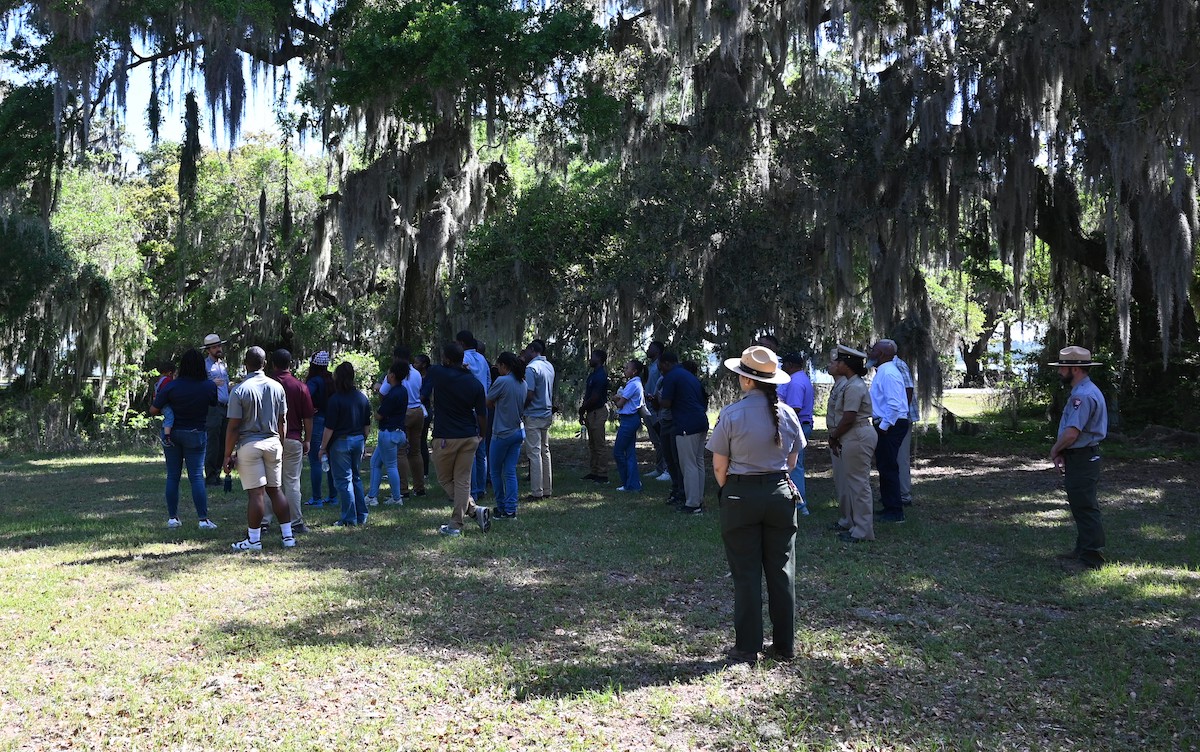By Scott Graber
In the April 14, 2025 New Yorker there is an opinion piece by David Remnick that talks about Trump’s recent executive order titled, “Restoring Truth and Sanity to American History.”
“It’s diagnosis is that there has long been among professors and curators ‘a concerted and widespread effort to rewrite our Nation’s history, replacing objective facts with a distorted narrative driven by ideology rather than truth.’”
And it will be the job, according to the executive order, of Vice President J.D. Vance, “to remove from the museum (of African American History and Culture) what is called, in exquisite Orwellese, ‘improper ideology.’”
So where does our young Cromwell begin his search?
In the last couple of years Susan and I have done the Legacy Museum in Montgomery, Ala.; the National Museum of African American History and Culture in Washington, D.C.; and the International African American Museum in Charleston.
The museum in Montgomery, Ala., is the most disturbing of these three taking one down into darkened cells where the slaves were held (pending distribution). These cells come with a slave — a crying, pleading hologram that makes you want to forfeit your $5 ticket and run back out the door.
Washington’s National Museum is less grim but it also features exhibits from the “Middle Passage” leavened by a section dedicated to Black entertainers and a cafeteria that serves collards.
Charleston’s Museum is built over Gadsden’s Wharf — the very same wharf where the slaves where unloaded. But one end of the building opens itself to the Cooper River and this impossibly blue panorama helps one withstand the (sometimes unhappy) exhibits inside.
I will readily admit that I was shaken by what I saw at The Legacy in Montgomery. Not that the holding cells themselves were a fiction; but the ghostly (holographic) slaves were obviously theatre — and a simulated beach littered with skulls was clearly a metaphor for the thousands of lives lost in the Middle Passage.
Now I know that the museum in Montgomery is a private, nonprofit and it should be beyond the scrutiny of J.D. Vance. But the obvious purpose of this museum is to make people like me ashamed of what happened to our Black brothers and sisters during slavery and its aftermath.
And, indeed, it achieved its purpose — when Susan and I left the Legacy Museum we walked to a local bar (Central) where we sat, drank, and talked for several hours about the horrors we had just seen.
Although the Legacy has taken ideological license with its exhibits; clearly that was its intent and, being privately owned and operated, its right. It was also our right to avoid this place — we could have spent our vacation dollars further south, let’s say on Bourbon Street in New Orleans.
Washington’s National African American museum is another matter because it is owned by the people of this country. If there is fiction in the presentation of its story—if its curators are presenting a “distorted narrative”—then J.D. has the right to find and fix this.
When we went (to the Washington museum) I didn’t see any obvious factual errors. I did see some history, mostly the Jim Crow era that made me sad; but hey, nobody forced me into this labyrinthine museum. I didn’t have to look at the lynching photos. We could have done Air and Space; or the National Gallery of Art or, if we had more time, relived Robert E. Lee’s turning movement at Chancellorsville.
The rest of Remnick’s article deals with Russia and its history of punishing the “revisionist” historians who exposed Lenin, Stalin and Beria for who they were — murderers.
“His (Yegor Ligachev) culture-war commissars took the cue, and approved a textbook filled with unquestioned assertions of official history, ‘Russia is a country of heroes.’ And ‘Ukraine is a neo-Nazi state.’”
“In the same spirit, according to Foreign Policy (Magazine), the Chinese Leader Xi Jinping oversaw the establishment a few years ago of historical nihilism ‘hotline’ so that citizens could rat out anyone who shared ‘wrong ideas and viewpoints.’”
So we still come back to feeling creepy about our new national theologian telling museum curators what is true and what must go. We come away thinking this not the 1st Amendment we were taught in high school.
But let’s be clear.
There is a voting demographic that is upset with these African American museums. We also know this Administration wants to use that anger to again motivate those who fear reparations.
Stay tuned.
Scott Graber is a lawyer, novelist, veteran columnist and longtime resident of Port Royal. He can be reached at cscottgraber@gmail.com.








